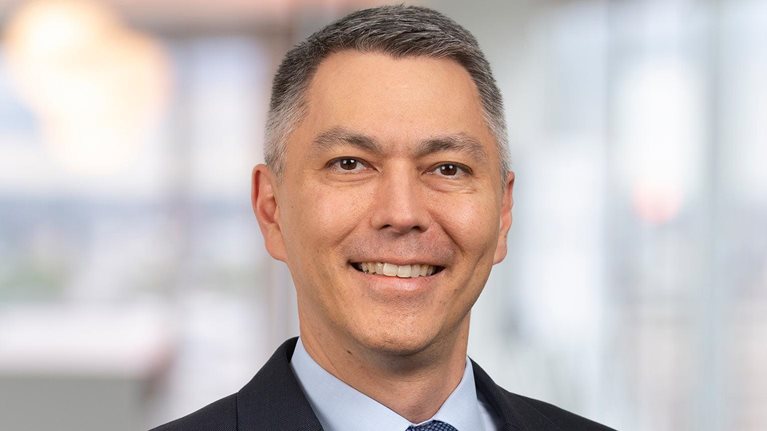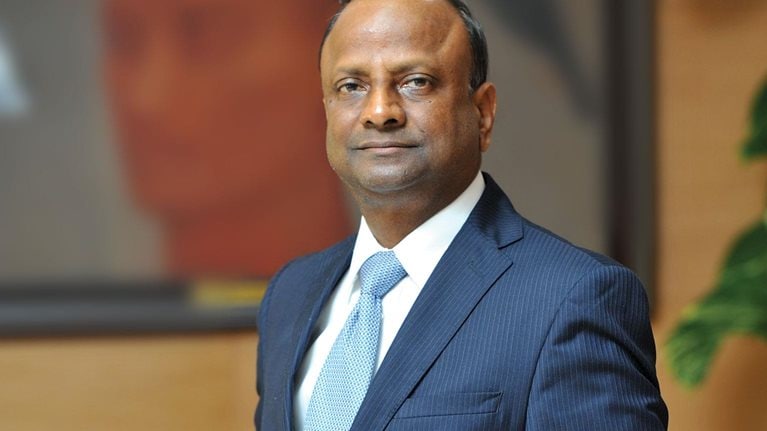“The thing I’m most proud of is the extent to which purpose has become so deeply embedded in our organization,” says Peter Harmer, reflecting on his five-year tenure as managing director and CEO of Insurance Australia Group (IAG). IAG is the largest general insurance company in Australia and New Zealand. Harmer says that IAG’s purpose to “make your world a safer place” extends not just to its millions of customers but also to each of its employees. After taking on the mantle in 2015, he prioritized cultivating a culture of trust, and attributes IAG’s resilience during the COVID-19 pandemic to an organizational sense of purpose. Remarkably, when workers were forced to make the swift transition from office to home within a week in March, employee engagement doubled and productivity increased. (For more on CEO leadership through the COVID-19 crisis, see “The CEO moment: Leadership for a new era.”)
Now, as he shares his duties with newly appointed deputy CEO Nick Hawkins, the organization faces new challenges. In June, he spoke with McKinsey’s Simon Blackburn and shared why he believes a company’s resilience is inextricably linked to its values, how to equip middle management to be effective remotely, and what he makes of the notion of an “Asian century.”
The Quarterly: How has your daily life as CEO changed since the onset of the COVID-19 crisis?
Peter Harmer: It’s clear that the world has changed in ways few of us would have predicted six months ago, and it’s had a pretty profound effect on us, both as institutions and as individuals. How I work has changed quite a bit; I’ve had to develop some new technology skills. Over the last handful of years, I’ve moved from 50 percent electronic, 50 percent paper to 90 percent electronic and 10 percent paper. But now, I’m basically 99.9 percent electronic.
I’m in a bit of an unusual position—I announced my retirement plans for later this year not long after COVID-19 hit us. At the same time, we appointed Nick Hawkins, who was our CFO, as deputy CEO. He’s taken on a lot of the day-to-day decision making, which has allowed me to elevate my thinking above the rough and tumble of the business. I’ve been trying to look through all the noise and thinking about what our organization will look like as we come out of COVID-19. What are some of the big questions we need to ask and answer? Who are the key stakeholders that need to be involved in the development of this narrative in the days and months ahead?
The Quarterly: Speaking of the big questions, let’s start at the macro level. What’s your take on the rise of an “Asian century” and the implications for companies outside Asia?
Peter Harmer: We’re largely pulling back to Australia and New Zealand to build on our capacity to serve our customers closest to us. While I do feel that we haven’t really quite grasped the concept of the Asian century, I suspect that the era we’re entering might well provide that opportunity. There’s a shift in global power, which we’re all well aware of. I expect there will be quite a bit of opening up and sharing at government levels, driven by COVID-19. The pandemic will test the humanitarian capacity of governments in the region as they think about things such as how a vaccine, when it’s developed, should be distributed. Who gets the early call? There are countries that are not as affluent, and not on top of their testing. I think Australia probably has a really important role to play in that, which then opens up opportunities for businesses collectively. There are some things that should work for us in Australia, such as similar time zones.
The Quarterly: Focusing on your own business, then, how do you build resilience to face the challenges ahead? And why does IAG seem to be faring so well during the COVID-19 pandemic?
Peter Harmer: Because our resilience didn’t start with COVID-19. It started years earlier, when we realized what it takes to be a purpose-led organization and just how deeply that needs to be embedded in the decision-making processes of the organization. I think you have to tether resilience to real beliefs. We have a deep commitment to our purpose, which is to make your world a safer place. Our purpose is the framework through which all our decisions are made. And we started with our people and our customers.
You have to tether resilience to real beliefs. We have a deep commitment to our purpose, which is to make your world a safer place. Our purpose is the framework through which all our decisions are made.
Out of that purpose flowed the commitment to flexible work to ensure we have a much more inclusive and collaborative work environment. For about two or three years now, we’ve developed significant work-from-home capabilities. Over 80 percent of our Australian staff were technologically equipped to work from home, including the vast majority of our call-center operators, and about 80 percent of this 80 percent regularly did. When we closed our branches on March 16, 98 percent of our people across the board in Australia and New Zealand were working from home by the end of March. That’s 13,000 out of 13,300 people.
In New Zealand, where we weren’t as advanced with getting technology into people’s hands earlier to equip them to work from home, we sourced and shipped a whole bunch of equipment from other parts of the company and other suppliers in Australia to New Zealand. We set up drive-through pickup stations, where employees could pick up their kit and go home. We had a dedicated help desk to get them connected from home.
Interestingly, productivity went up. I must say, I was thinking, “Well, this is the honeymoon period; it’ll come off.” But it hasn’t. Productivity has stayed up, and our engagement surveys have indicated that our eNPS [employee net promoter score] has jumped from 36 to 66. I’m incredibly pleased with the way all our people rose to the challenge of maintaining customer service while ensuring their own safety and the safety of our customers.
The Quarterly: How do you expect the remote-working model to evolve over time?
Peter Harmer: We talk a lot about work–life integration, as opposed to work–life balance. This distributed way of working actually facilitates integration. We see it in the traffic on our servers. People may log off at 11 at night and on at 7 in the morning. But they’ll be quiet for two or three hours during the day as they attend to other duties like homeschooling their children. And we were very, very clear to get the message to our people that educating their children is probably the most important thing they would do in their life, and thus it had to take priority.
That said, what a lot of us have realized is that as wonderful as the benefits of working from home are, we miss the casual social interactions that occur in an office environment that reenergize us through the course of the day. The fact that we’re not traveling daily to and from the office means that we’re spending more time behind the computer screen. I find videoconferencing more intense than face to face, because you lack all of the visual cues that help you read the room—where everybody is in terms of understanding the content and being able to bring people in and out of the conversation.
So while there are a few changes that I’d like to see maintained, there are others I’d be happy to give up. I, personally, expect to be returning to something like two to three days a week in the office.
The Quarterly: How do you make that flexibility the norm? Do you have any advice for other organizations trying to build this kind of resilience through the pandemic?
Peter Harmer: We realized three years ago that the biggest impediment to implementing flexible work practices was the role that middle management played. Middle management had to be confident that they still had the tools to manage how work was getting done, and to make sure that it was getting done. That required technology, but also good, old-fashioned trust in our people. COVID-19 was probably the first opportunity to test the company, in terms of its commitment to its purpose as it applies to its people.
If you’re only now thinking about what it takes to build trust between management and the workforce, you’ve already lost the battle. To me, trust comprises four elements. One is reliability. If you say you’re going to do something, follow through and get it done. If you don’t think you can deliver, don’t say it—it’s about aligning expectations between management and employees. The second element is acceptance. Management doesn’t have all the answers. More often than not, answers come off the shop floor, and managers need to accept the fact that great views come from all over the organization and recognize the importance of being open to these ideas.
Management doesn’t have all the answers. More often than not, answers come off the shop floor, and managers need to accept the fact that great views come from all over the organization.
The third element is openness and transparency. I’ve always taken the view that our people are better off knowing the full circumstances in which we’re making the decisions and not shielding them from some of the ugly truths out there. We need to credit them with being able to interpret and understand what’s going on, so rather than being selective with the information you provide, be very open and transparent. And make sure you equip them to actually use the information to sort out their own thinking processes around the decision that has been made.
The final element is congruence. This is where purpose comes in again—it is not a marketing tagline. We’ve all seen people who say all the right things, but we don’t have confidence that they’re doing what they say. We have an internal message board where you can trawl thousands of stories couched in the frame of purpose. It’s so important that there is consistency between what’s said and done. You only get trust when you focus on all four elements in totality.
The Quarterly: What other traits do leaders need, especially during volatile times?
Peter Harmer: Hand in glove with purpose is, of course, courage and integrity. Every organization, big or small, is a victim of its own complexity, and IAG is no different. We’ve been trying to eliminate this complexity for a handful of years, and a big part is having the integrity to actually ask the right questions and be prepared to hear the truth. And then have the courage of your convictions to follow through. To do that, you need to be a good listener with a high level of empathy. In my experience, if people can understand the “Why?” they’ll sign up to do something they would ordinarily choose not to.
The Quarterly: Have you noticed any behavioral changes in your customers that you think will endure, and how are you responding to them?
Peter Harmer: It’s still too early to form views that are too definitive, but I think people’s sense of risk has definitely increased. We expected that, when lockdown restrictions began to ease, vehicle traffic would rise to close to pre-COVID-19 levels because people not working from home would be avoiding public transport—and that’s exactly what we saw. We are seeing a marginal uptick in the average claim’s cost. Some of that is pressure on the smash repairers, and some of it are the increased prices of vehicle parts as supply chains have been disrupted and inventory has been largely soaked up. These are early trends, but in the long run, I suspect we’ll see a gradual return to more normal patterns of accident frequency and claim size.
People are more receptive now to trusted brands that have the ability to make promises to help them. I think there’s going to be a simplification of the way customers and companies interact; people are going to invest in fewer, but more trustworthy, brands. This requires longer-term thinking about how to strengthen these brands, which may come at the expense of some of the short-term opportunism that we’ve seen. Investor expectations are now lowered, probably for a considerable period of time, and I imagine the same for interest rates around the world. It would be a shame to waste that.
The behaviors we most expect to stick are the ones that are an acceleration of an existing trend, such as use of digital channels. It’s safe to assume that increased investment in digital capabilities is just the price you pay for entry to the park. Our digital channels across all facets have much higher levels of traffic, both from a sales and from a service perspective, particularly from customers lodging claims. We’ve essentially seen three years of progress in six months. So one thing we’ll be doubling down on is finding extra investment capacity to accelerate what we’ve been doing through our digital channels to feed off of the customer behavioral change that’s definitely occurred. I believe that businesses that succeed in the future are going to be those that double down on digital and hopefully eradicate complexity, which I think is the antithesis to resilience.
Businesses that succeed in the future are going to be those that double down on digital and hopefully eradicate complexity, which I think is the antithesis to resilience.
The Quarterly: Last, in the face of all this disruption, do you see the possibility to create positive change for society at large?
Peter Harmer: For me, it goes back to our people and how we meet their needs, one of which is providing meaning. Today, employees want to find meaning in their work, which again reflects how work has become so integrated in their lives. Companies can offer meaning through work and can influence the bringing about of outcomes that are consistent with these sources of meaning in society more broadly. In my experience, if you’re really clear about what you stand for and your purpose, you attract similarly minded people.
Secondly, today there’s an incredible amount of complexity in our economy and in government. Our own ability to understand complexity, as we deal with COVID-19, can be a means to help others understand where complexity is creating waste in our businesses and our economy—and help to do something about it, from taxation reform to industrial-relations reform. That would be a very positive outcome.


